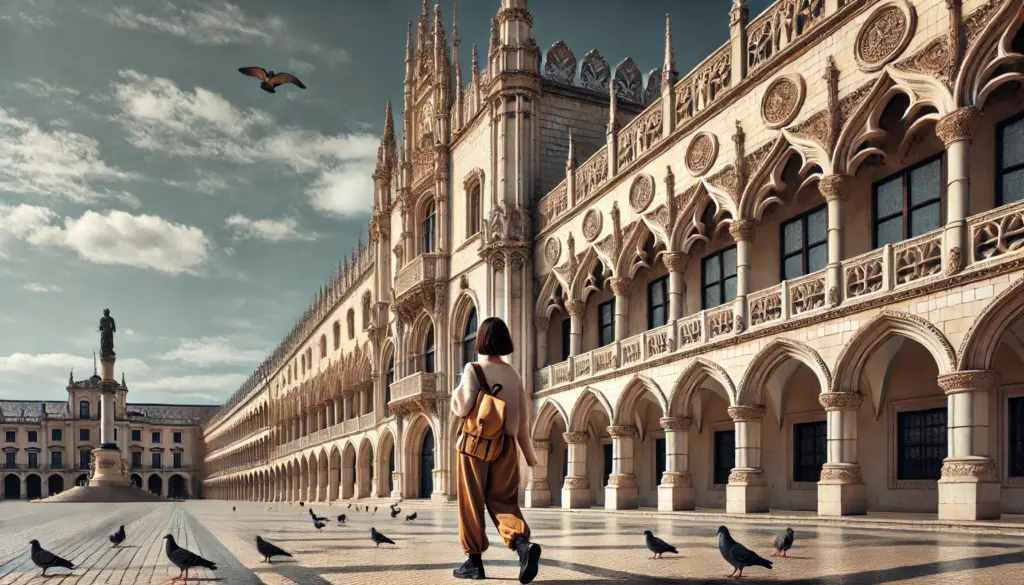ChatGPT:
Krakow is one of Poland’s most historic and cultural cities, located in the southern part of the country along the Vistula River. As a former royal capital, it boasts a rich history, evident in its well-preserved medieval architecture, stunning Gothic, Renaissance, and Baroque buildings, and vibrant cultural scene.
The city’s centerpiece is the UNESCO-listed Old Town, where the iconic Rynek Główny (Main Market Square) is one of the largest medieval squares in Europe. Key landmarks include St. Mary’s Basilica, known for its intricate altarpiece and famous bugle call, and Wawel Castle, a symbol of Polish royalty and national identity.
Krakow is also home to the historic Kazimierz district, which was once the heart of Jewish life in the city and now hosts a blend of trendy cafes, art galleries, and cultural landmarks like the Old Synagogue and Schindler’s Factory Museum.
The city is an important educational and cultural hub, with Jagiellonian University, one of the oldest universities in Europe, located there. Krakow’s history during World War II and the Holocaust is significant, with nearby Auschwitz-Birkenau serving as a poignant reminder of its darker chapters.
The city’s blend of history, culture, and modernity makes it a popular destination for visitors.
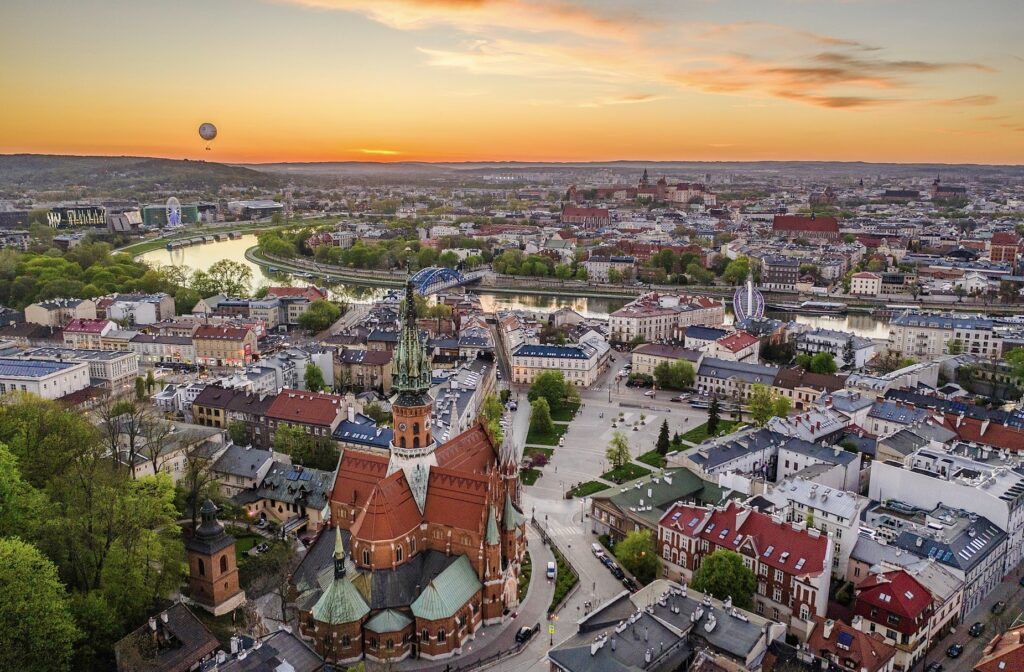
The origin and development of Krakow are rooted in its deep historical and cultural significance, making it one of the most important cities in Central Europe. Here’s an overview of Krakow’s journey through time:
Early Origins
Krakow’s history stretches back to prehistoric times, with archaeological evidence of settlement in the area dating as far back as the Stone Age. According to legend, Krakow was founded by the mythical ruler Krakus, who built the city above a cave occupied by the Wawel Dragon. Historically, it is believed that the city was established as a Slavic settlement in the 7th century on Wawel Hill, overlooking the Vistula River.
Medieval Krakow (10th – 15th centuries)
Krakow’s formal history begins in the 10th century when it became a part of the Kingdom of Poland. In 966, it was included in the early Polish state under the Piast dynasty. By the year 1000, it was established as a bishopric, reflecting its growing importance.
In 1038, Krakow was designated the capital of Poland under King Casimir I, and over the next few centuries, it flourished as a major political, cultural, and economic center. The 13th century saw the city destroyed by Mongol invasions, but it was soon rebuilt in 1257, following the granting of Magdeburg rights, which laid the foundation for its grid-like medieval layout.
By the 14th century, under King Casimir III the Great, Krakow had become a thriving hub. The foundation of Jagiellonian University in 1364, one of the oldest universities in Europe, contributed to its prestige. The city’s development also benefited from its strategic location along key trade routes between Western and Eastern Europe.
Renaissance and Poland’s Golden Age (15th – 17th centuries)
Krakow reached its peak during the Renaissance, particularly in the 16th century, when it served as the seat of the Jagiellonian dynasty and the capital of the Polish-Lithuanian Commonwealth. This period, often called the “Golden Age,” saw the construction of many of Krakow’s most iconic buildings, including the Gothic St. Mary’s Basilica and the Renaissance Wawel Castle, both of which still stand as cultural treasures today.
The city’s cultural life thrived as artists, intellectuals, and craftsmen were drawn to its court. Wawel Castle became a center of learning, while the influence of Italian Renaissance culture introduced new architectural styles and artistic developments to the city.
Decline and Partition (17th – 19th centuries)
The city’s fortunes began to decline in the 17th century due to wars, invasions (such as the Swedish Deluge in the 1650s), and internal strife. In 1596, King Sigismund III Vasa moved the capital to Warsaw, marking the beginning of Krakow’s reduced political influence. However, it retained its role as the coronation city for Polish kings and a cultural hub.
In the late 18th century, Krakow faced a more significant decline when Poland was partitioned by its neighbors. The city fell under Austrian control in 1795 during the Third Partition of Poland, ending its status as a part of an independent Polish state. During the Napoleonic era, it briefly became a part of the Duchy of Warsaw but was later designated a semi-autonomous Free City of Krakow in 1815 under the Congress of Vienna.
Despite Austrian rule, Krakow maintained a sense of Polish identity and became a center for national resistance, intellectual life, and cultural revival, especially in the arts and literature.
Modern Era (19th – 20th centuries)
Krakow’s national and cultural importance persisted through the 19th century, especially during the rise of Polish Romanticism. Notable figures like the poet Adam Mickiewicz became associated with the city’s intellectual scene, fostering a sense of national consciousness.
In 1918, following the end of World War I and the collapse of the Austro-Hungarian Empire, Poland regained its independence, and Krakow once again became part of the reconstituted Polish state. However, during World War II, Krakow was occupied by Nazi Germany, and the city became the capital of the German-occupied General Government. Many of its Jewish residents were forced into the Krakow Ghetto or sent to nearby concentration camps like Auschwitz-Birkenau.
After the war, Krakow emerged relatively unscathed compared to other Polish cities like Warsaw, which was almost completely destroyed. Under Communist rule, the city underwent industrialization, and the nearby town of Nowa Huta was developed as a socialist model city.
Post-Communist Krakow (1990 – Present)
With the fall of Communism in 1989, Krakow re-established itself as a vital European cultural and academic center. Since then, the city has undergone extensive preservation efforts to restore its historic architecture and landmarks, earning a place on the UNESCO World Heritage List in 1978.
Today, Krakow is celebrated as one of Poland’s most beautiful and culturally rich cities, embodying a blend of ancient history and modern vibrancy.
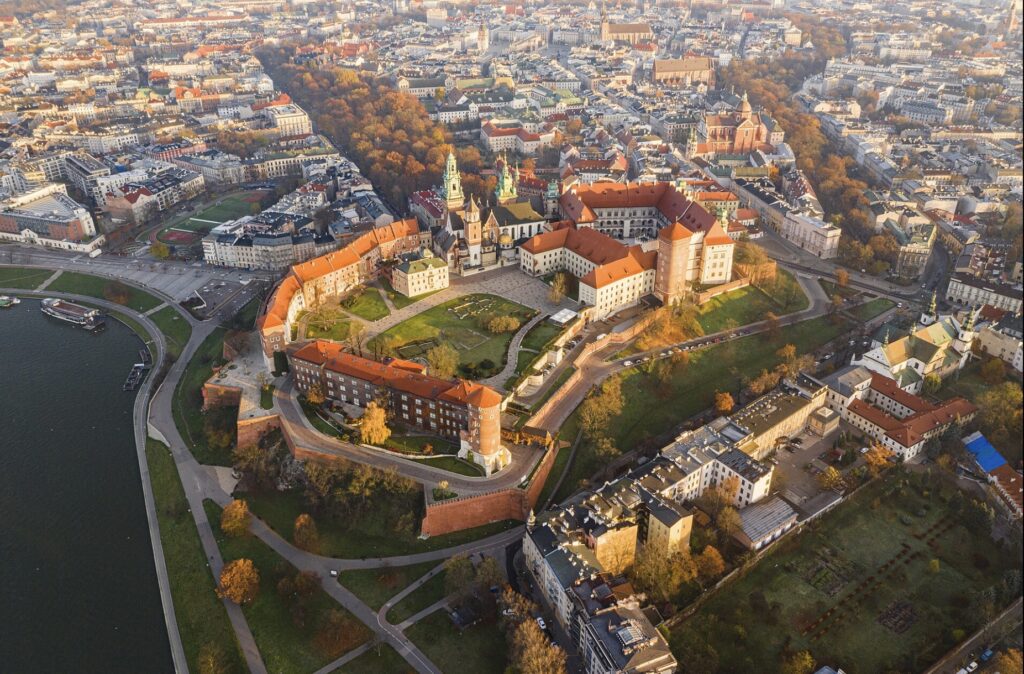
Krakow is home to numerous historical monuments and tourist attractions, many of which reflect its long and rich history. Below is a list of key sites to visit:
Old Town (Stare Miasto)
- Main Market Square (Rynek Główny) – One of the largest medieval squares in Europe, it serves as the heart of Krakow’s Old Town and is surrounded by important landmarks.
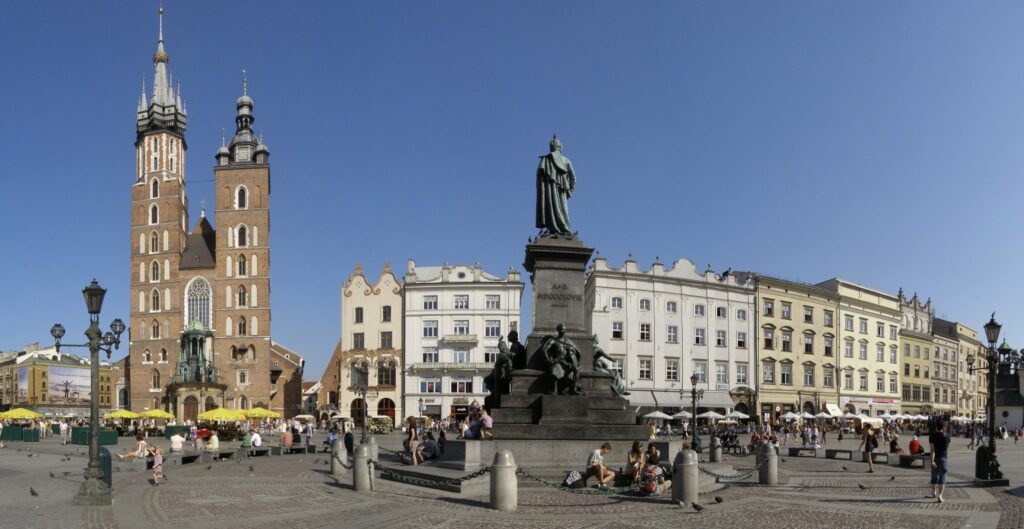
- St. Mary’s Basilica (Kościół Mariacki) – A stunning Gothic church known for its wooden altarpiece by Veit Stoss and the hourly bugle call (Hejnał) from its tower.
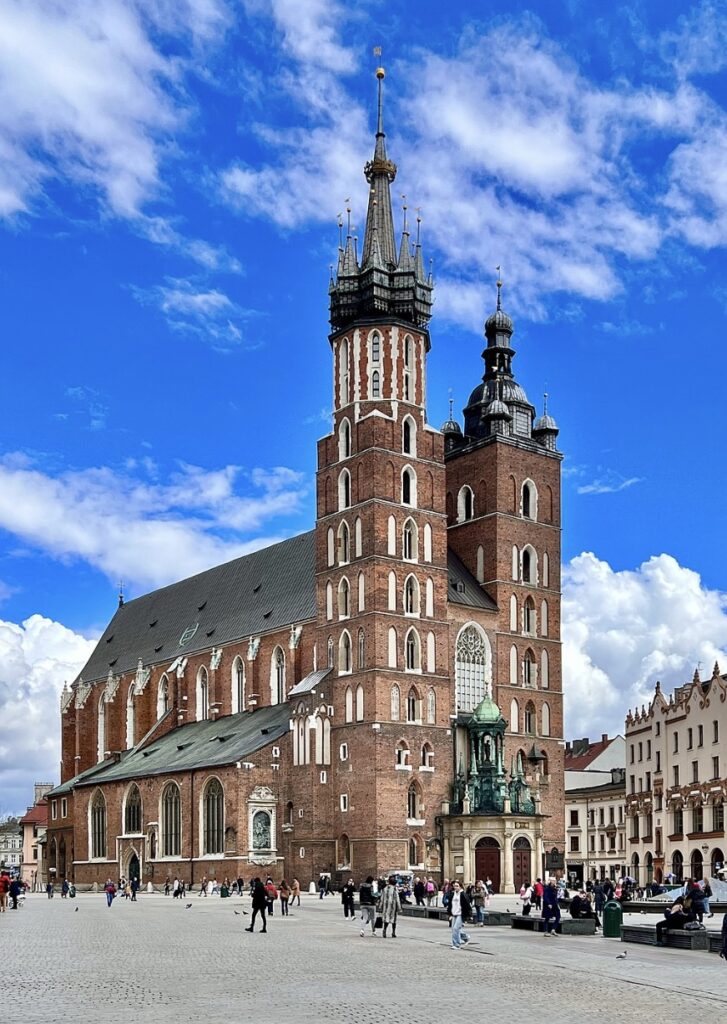
- Cloth Hall (Sukiennice) – A historic Renaissance trade hall in the middle of the Main Market Square, now home to souvenir stalls and a branch of the National Museum.
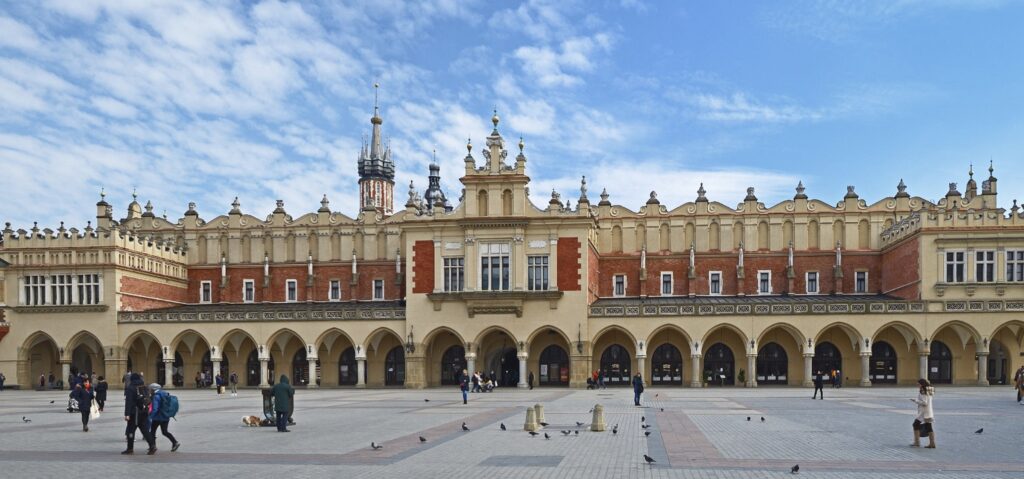
- Town Hall Tower (Wieża Ratuszowa) – The remaining tower of the former town hall, offering panoramic views of the city.
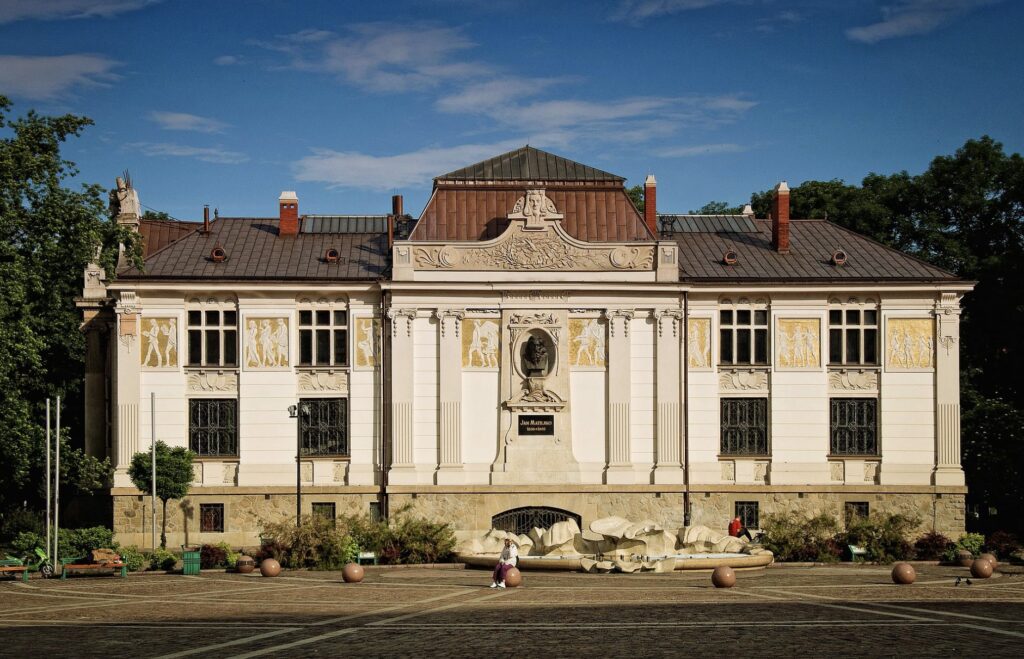
- Church of St. Adalbert (Kościół św. Wojciecha) – A small church on the Main Market Square, one of the oldest in Krakow.
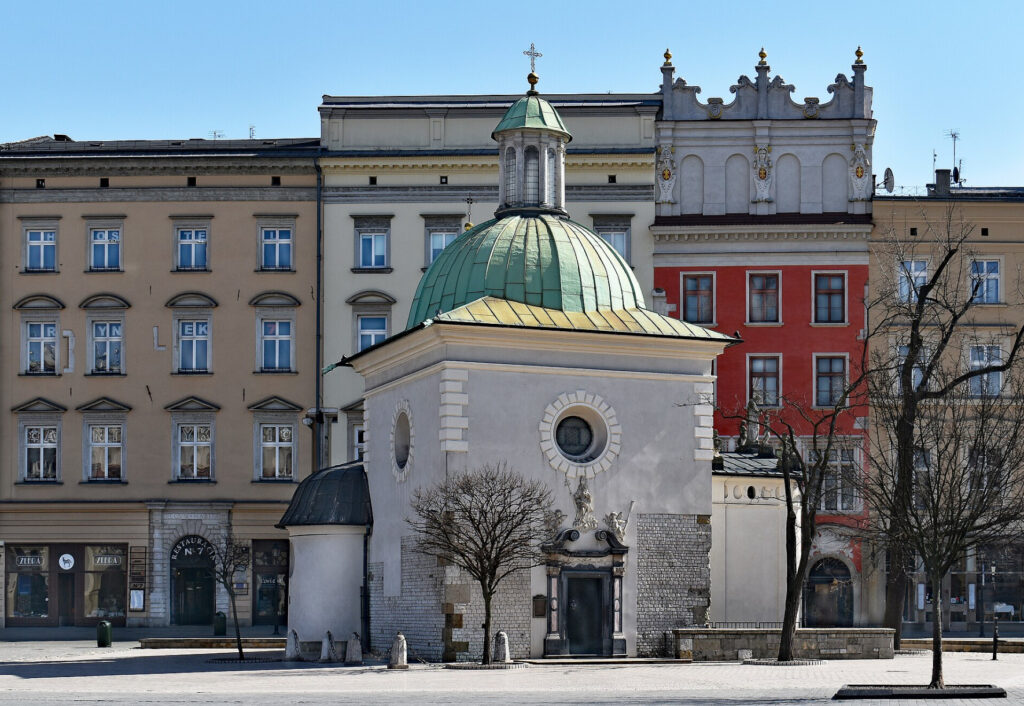
Wawel Hill
- Wawel Castle – A UNESCO World Heritage Site, this Renaissance castle served as the residence of Polish kings and is home to an impressive collection of art, royal chambers, and the Crown Treasury.
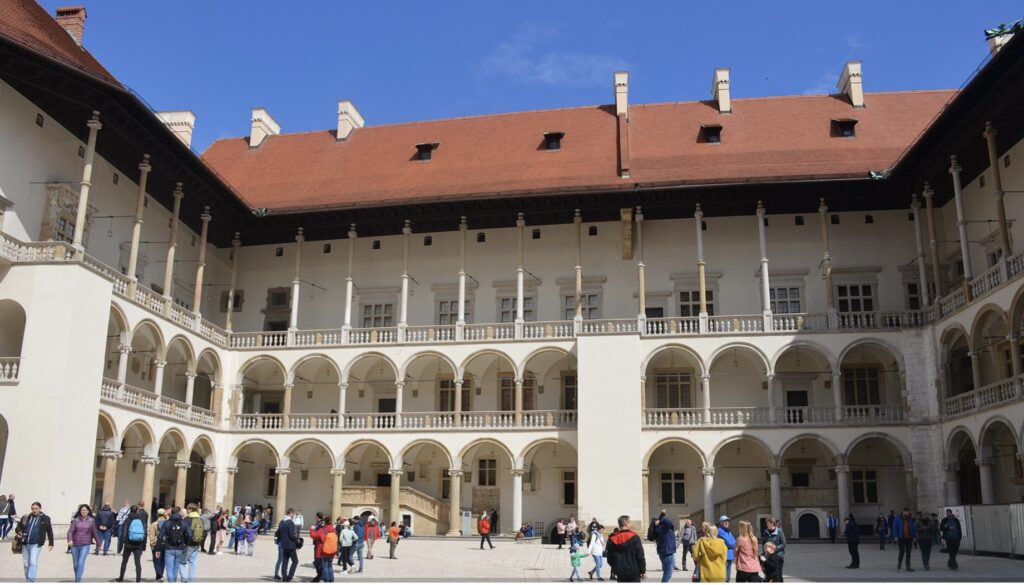
- Wawel Cathedral (Cathedral Basilica of Sts. Stanislaus and Wenceslaus) – The coronation site of Polish kings, this Gothic cathedral contains royal tombs and the Sigismund Bell, the largest bell in Poland.
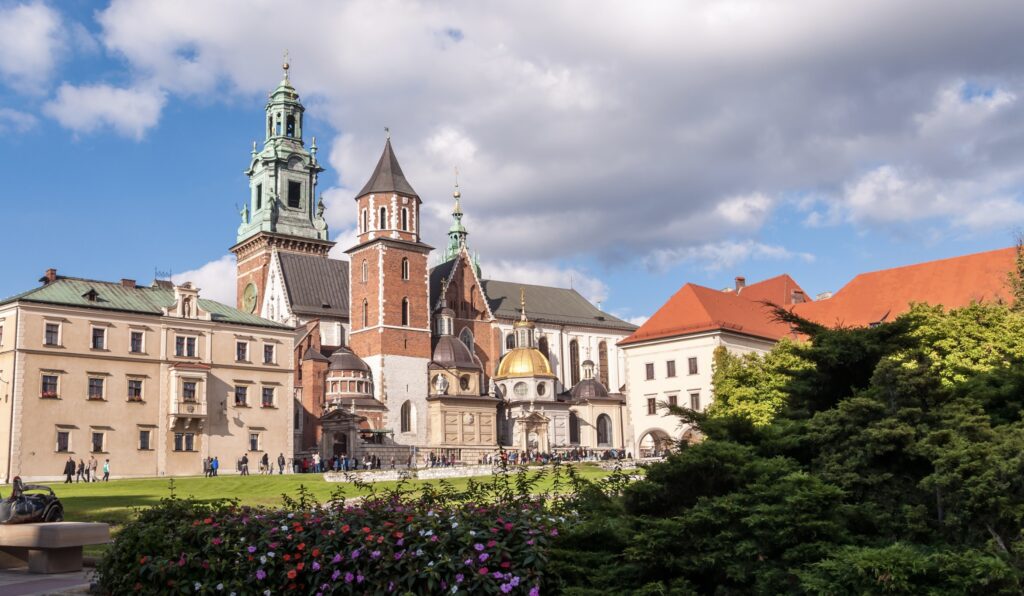
- Wawel Dragon’s Den (Smocza Jama) – A cave beneath Wawel Hill, tied to the legend of the Wawel Dragon.
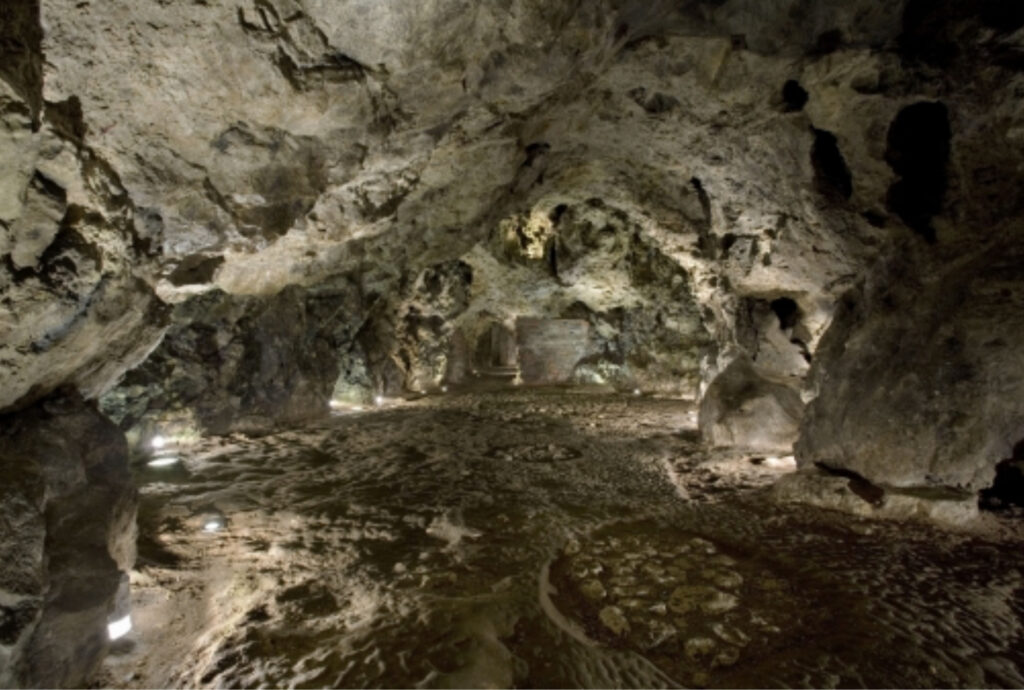
Kazimierz District (Jewish Quarter)
- Old Synagogue (Stara Synagoga) – One of the oldest synagogues in Poland, now a museum documenting Krakow’s Jewish history.
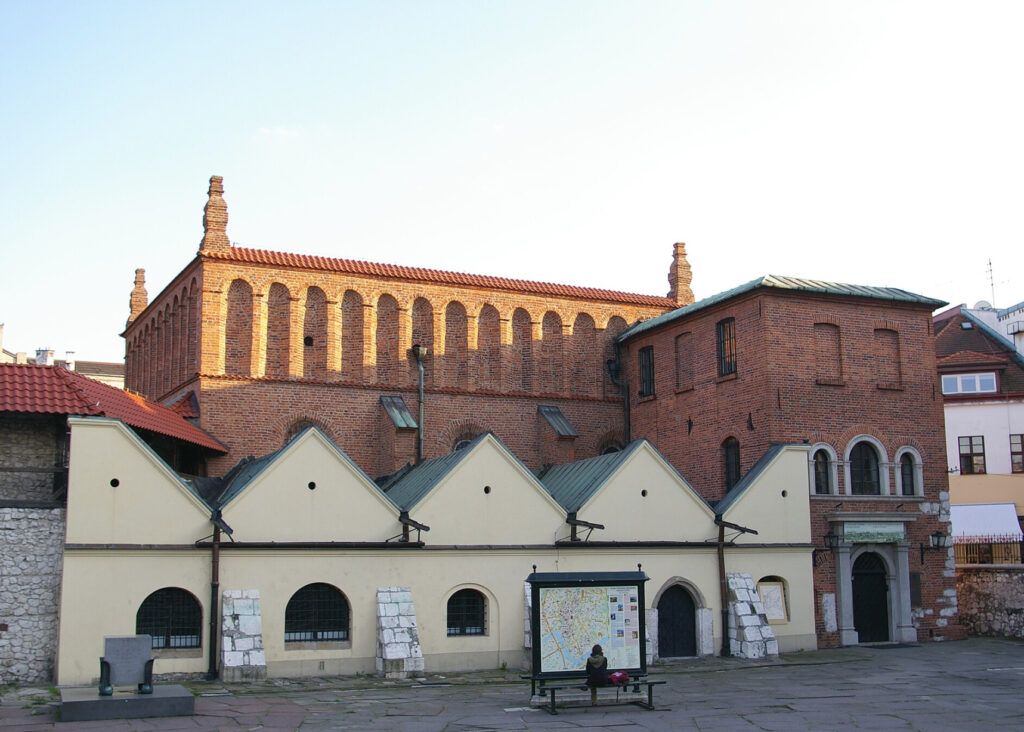
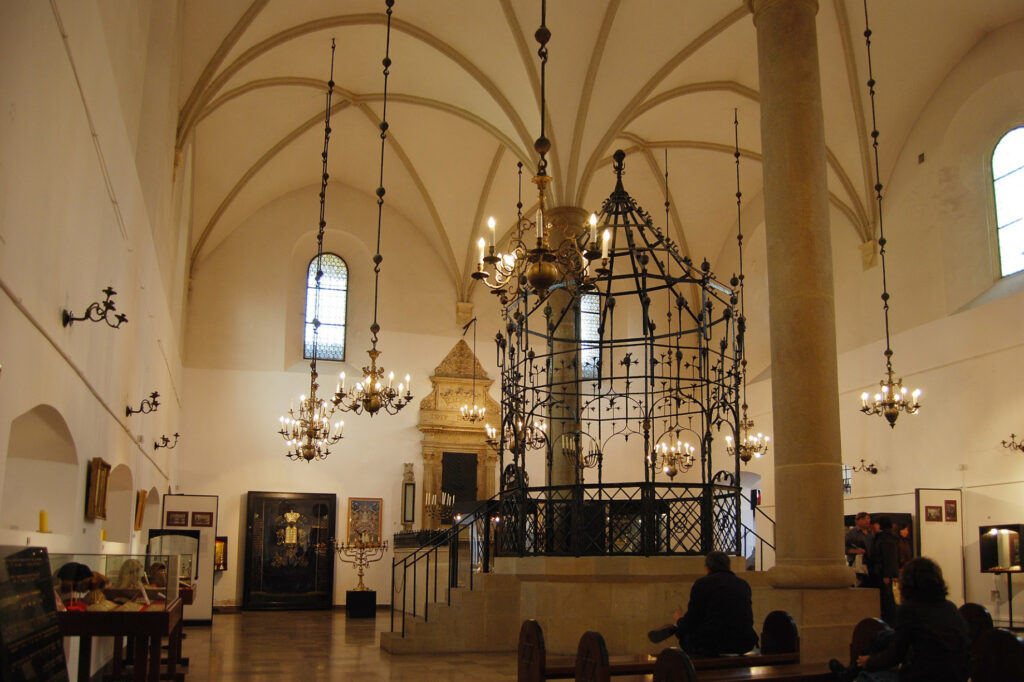
- Remuh Synagogue and Cemetery – A historic synagogue that still functions today, with an adjacent cemetery dating back to the 16th century.
- Galicia Jewish Museum – A museum dedicated to preserving the memory of Jewish life in the Galicia region of Poland and the Holocaust.
- Oskar Schindler’s Factory – Now a museum that chronicles the history of Krakow during World War II, including the story of Oskar Schindler, who saved many Jewish lives.
Planty Park and Surroundings
- Barbican – A medieval fortification that once protected the city, now part of Krakow’s historic defensive walls.
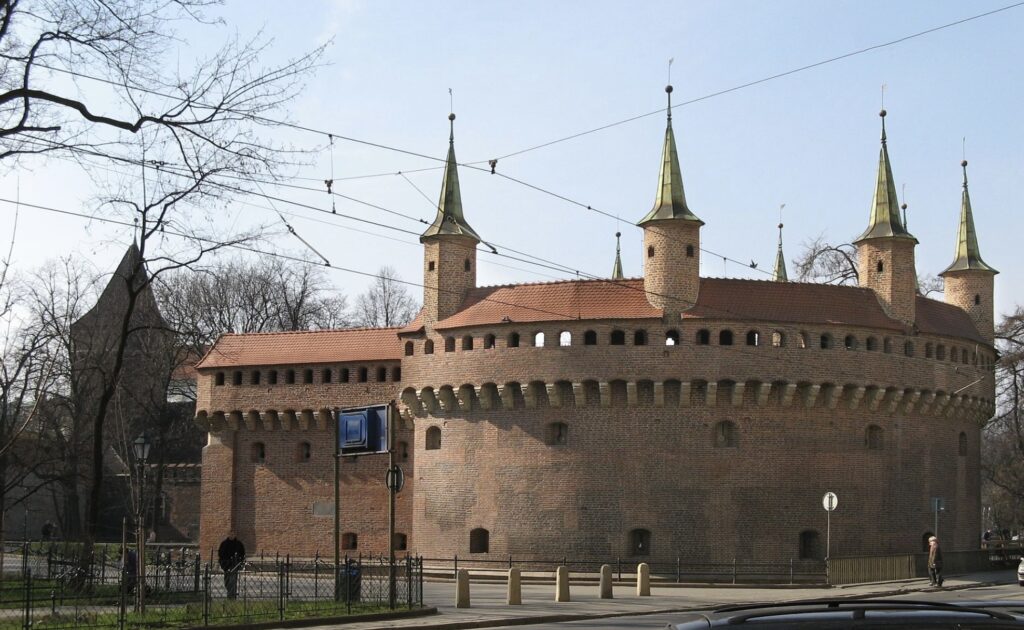
- Florian Gate (Brama Floriańska) – One of the few remaining medieval gates of Krakow, leading to the Royal Route.
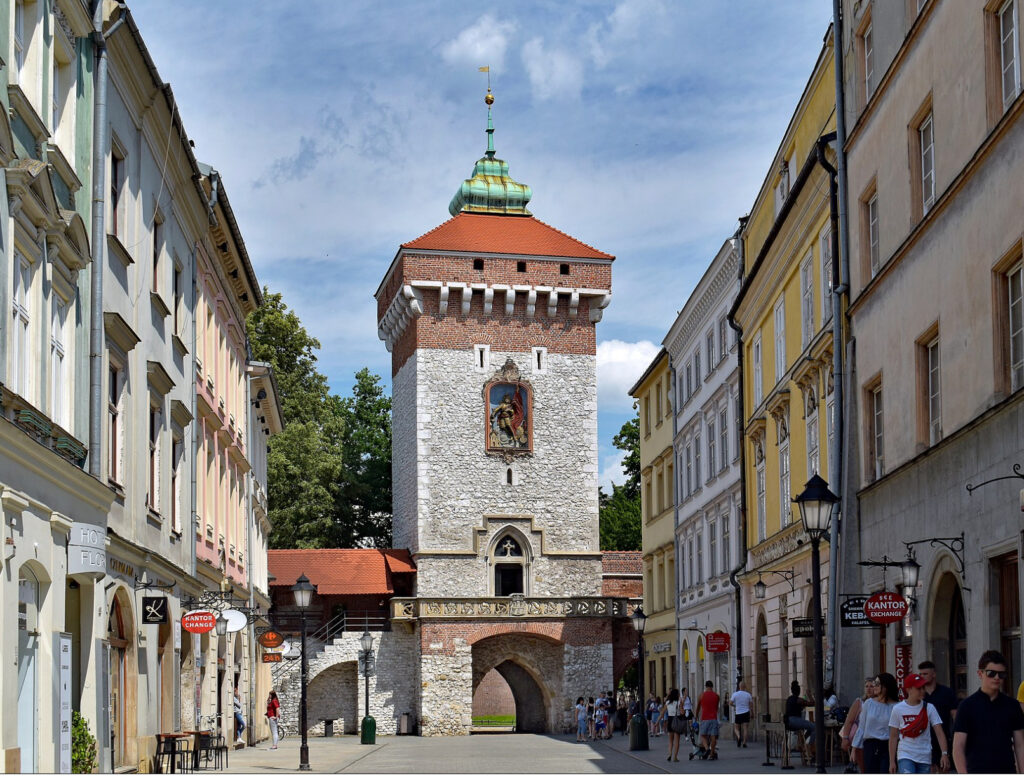
Other Notable Churches
- Church of Saints Peter and Paul (Kościół Świętych Piotra i Pawła) – A Baroque church with a striking façade and large interior.
- Church of St. Andrew (Kościół św. Andrzeja) – A Romanesque church, one of the oldest in Krakow.
Museums and Cultural Sites
- Rynek Underground Museum – A museum located beneath the Main Market Square, offering insights into Krakow’s medieval history through interactive exhibits.
- National Museum in Krakow (Muzeum Narodowe) – The largest museum in Krakow, featuring collections of Polish art, including works by Jan Matejko.
- Czartoryski Museum – Houses the famous painting “Lady with an Ermine” by Leonardo da Vinci, along with other European art treasures.
Nowa Huta
- Nowa Huta District – A planned socialist realist city built during the Communist era, offering a stark contrast to Krakow’s medieval architecture.
Surrounding Attractions
- Auschwitz-Birkenau – Located about an hour’s drive from Krakow, the former Nazi concentration camp is now a museum and memorial to the Holocaust.
- Wieliczka Salt Mine – A UNESCO World Heritage Site, this centuries-old salt mine features underground chapels, sculptures, and tunnels carved from salt.
Krakow’s attractions combine the city’s medieval charm, cultural significance, and poignant historical narratives, making it a rich destination for history and culture lovers.
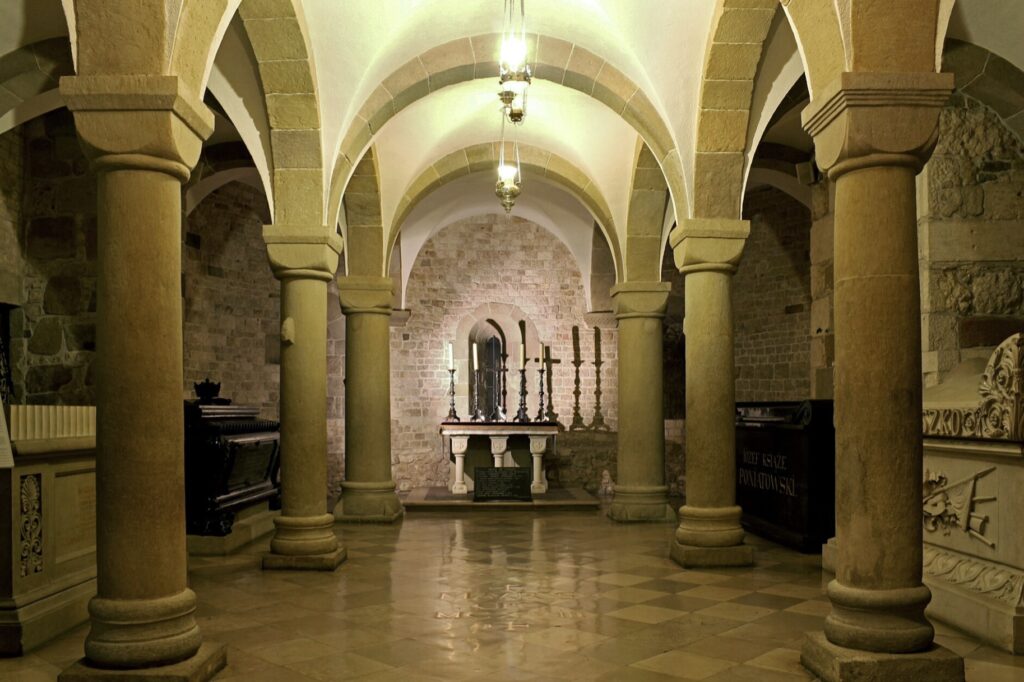
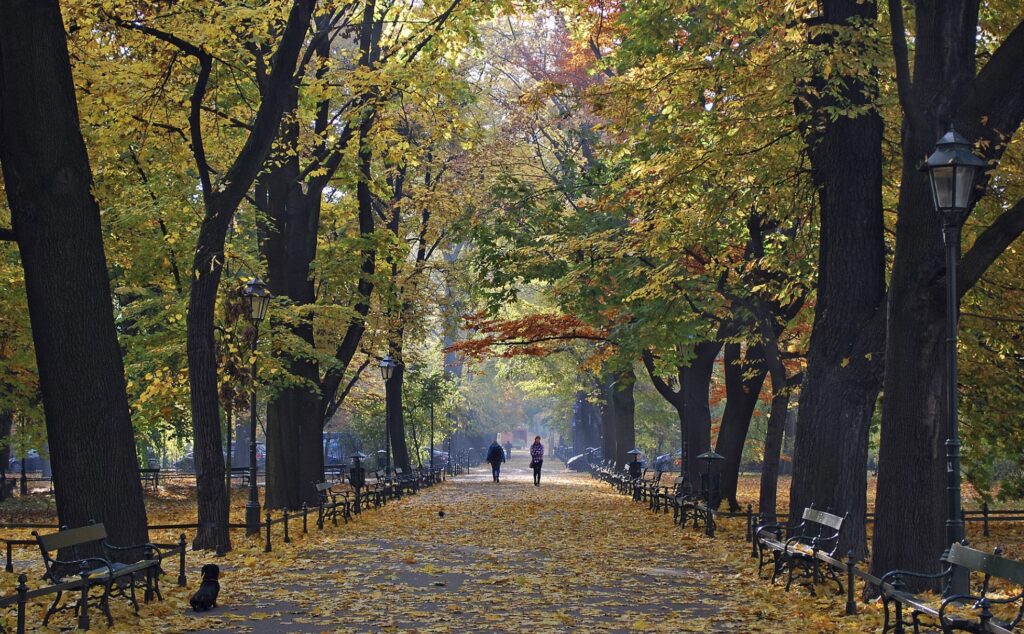
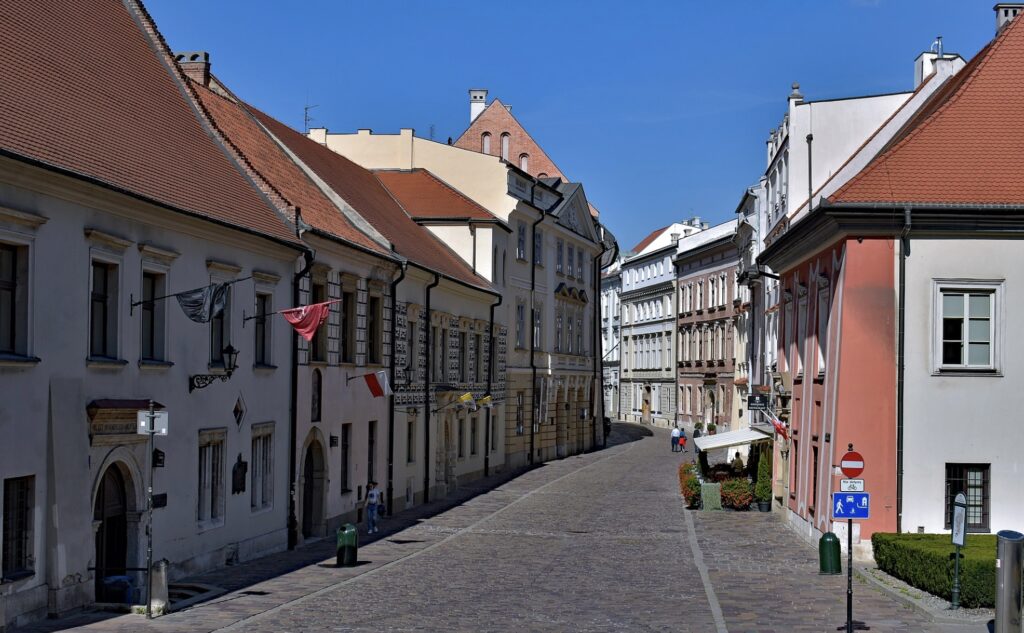
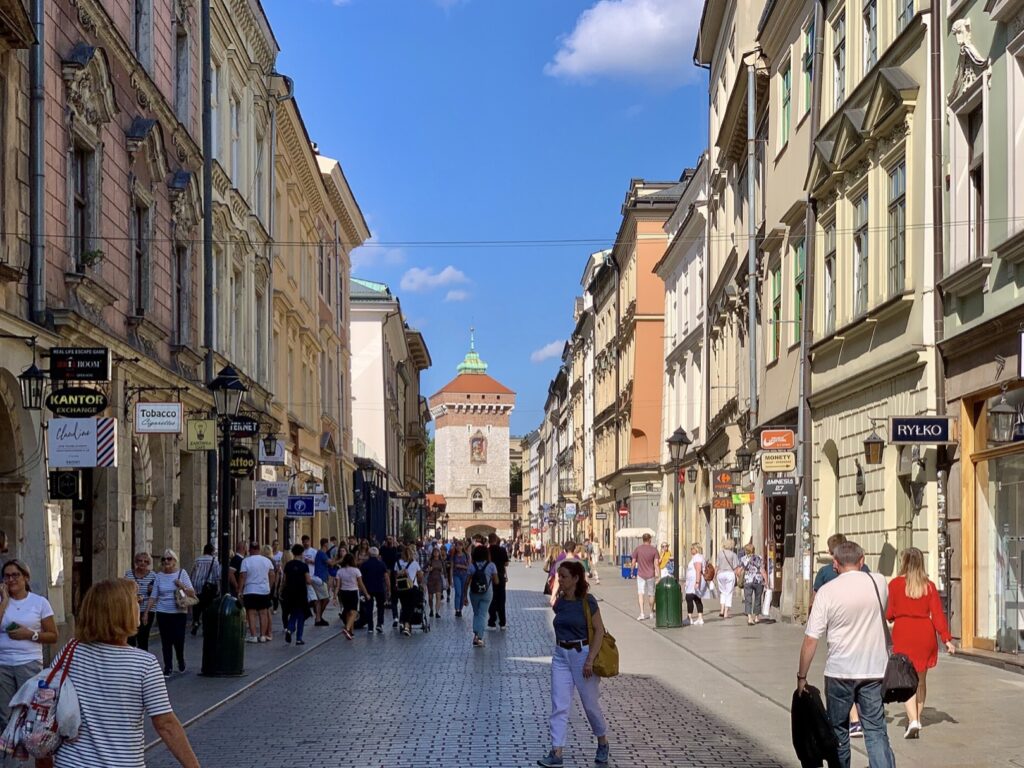
Krakow is home to St. Francis of Assisi Basilica (Bazylika św. Franciszka z Asyżu), which features stunning stained glass windows designed by Stanisław Wyspiański, one of Poland’s most famous artists and playwrights. Wyspiański’s works, including the beautiful “God the Father – Let It Be” window, are considered masterpieces of Art Nouveau.
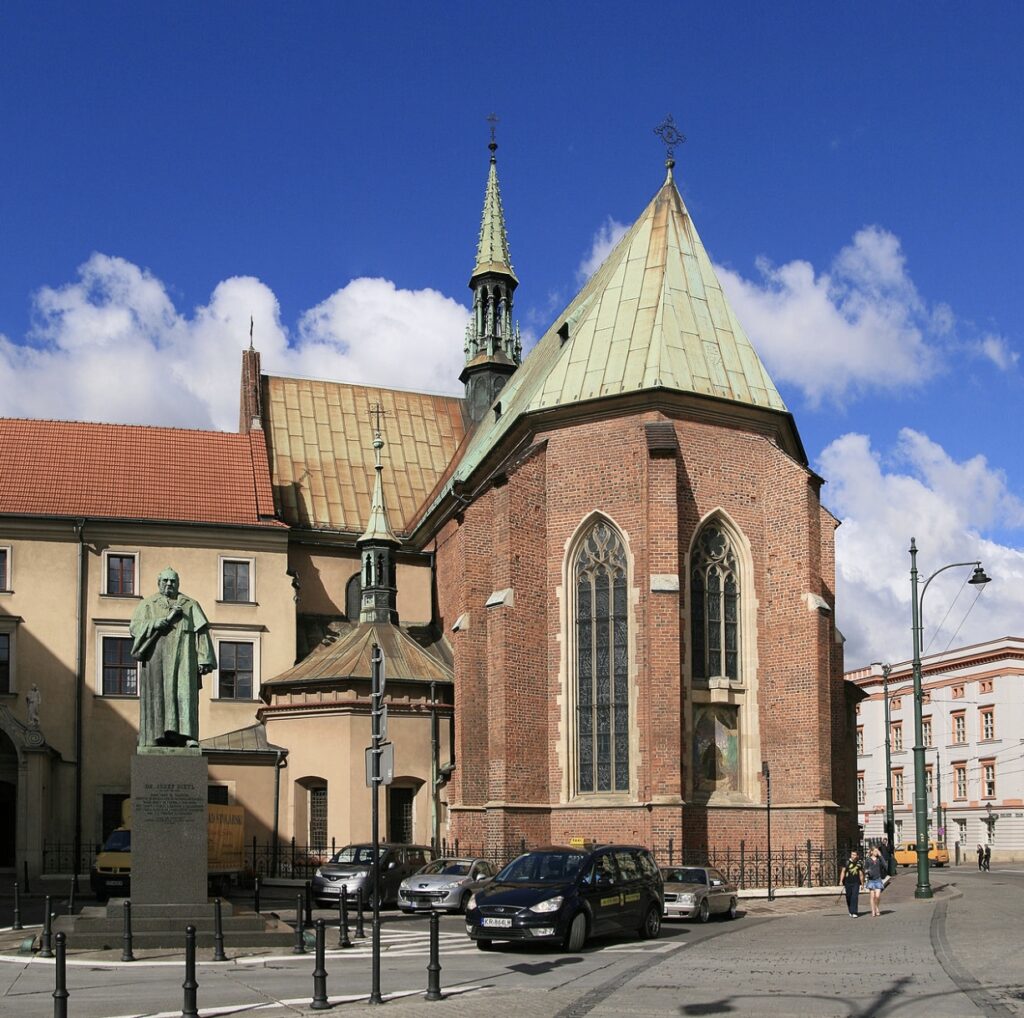
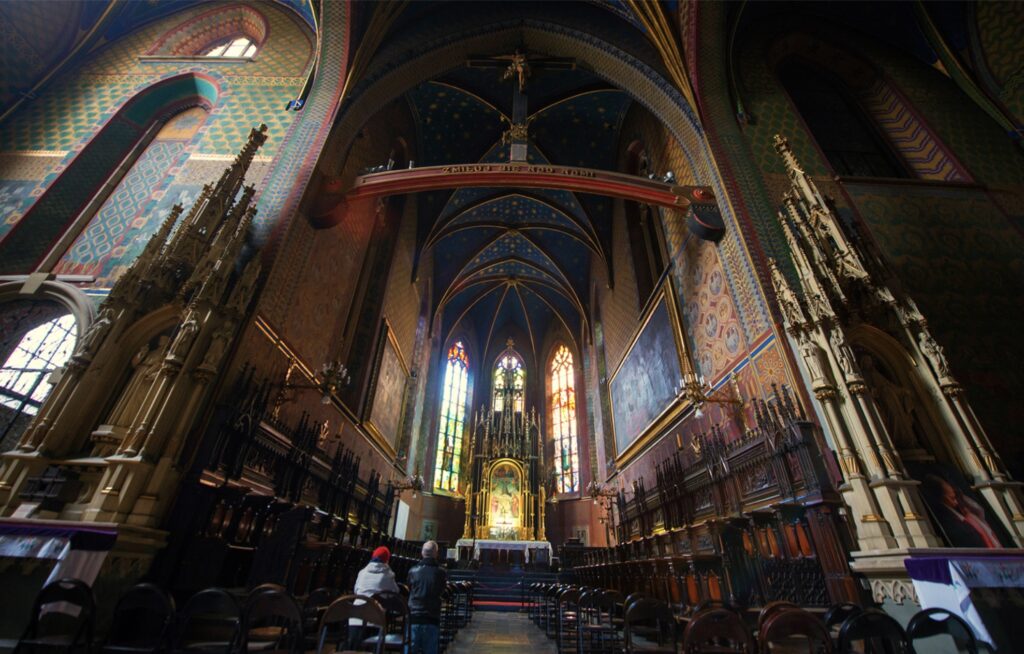
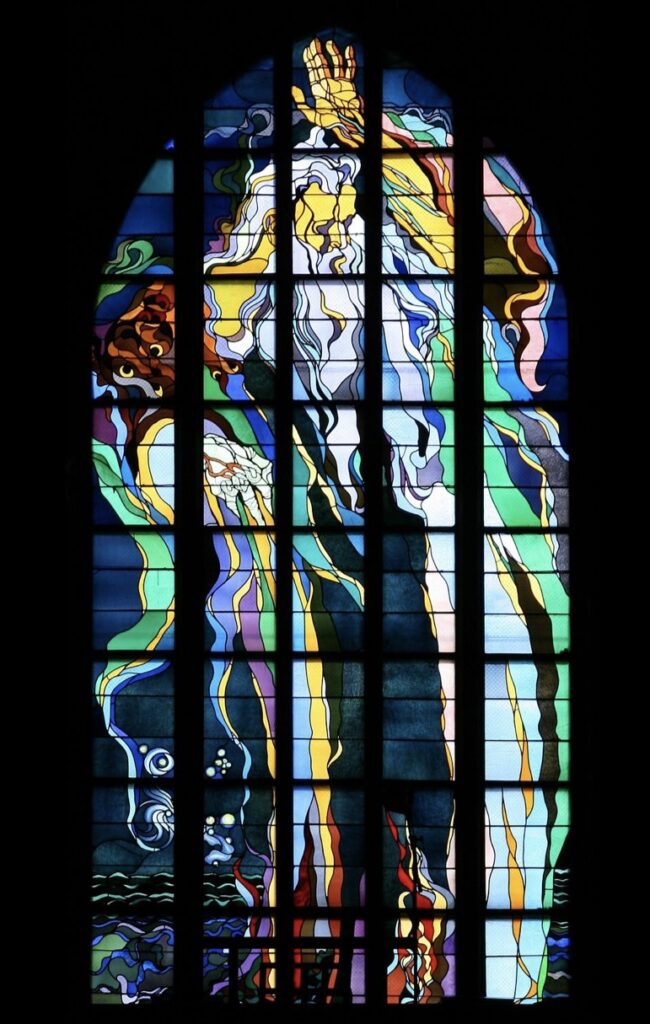
Jewish Klezmer music is a significant part of Krakow’s vibrant cultural scene, particularly in the Kazimierz district, which was historically the center of Jewish life in the city.
Here are some popular places where you can experience Klezmer music in Krakow:
- Klezmer Hois – A well-known restaurant and cultural venue in Kazimierz that frequently features live Klezmer music performances alongside traditional Jewish cuisine.
- Alchemia – A cozy bar and cultural venue that hosts various live music events, including Klezmer music, in an atmospheric setting.
- Ariel Restaurant – Another iconic location in Kazimierz that offers live Klezmer music performances along with Jewish and Polish cuisine.
- Galicia Jewish Museum – Occasionally organizes concerts, including Klezmer music performances, as part of its cultural programming.
In addition, the annual Jewish Culture Festival in Krakow, typically held in late June or early July, features a wide range of Klezmer performances by both local and international artists. This festival is one of the largest of its kind in the world, celebrating Jewish culture through music, dance, and art.
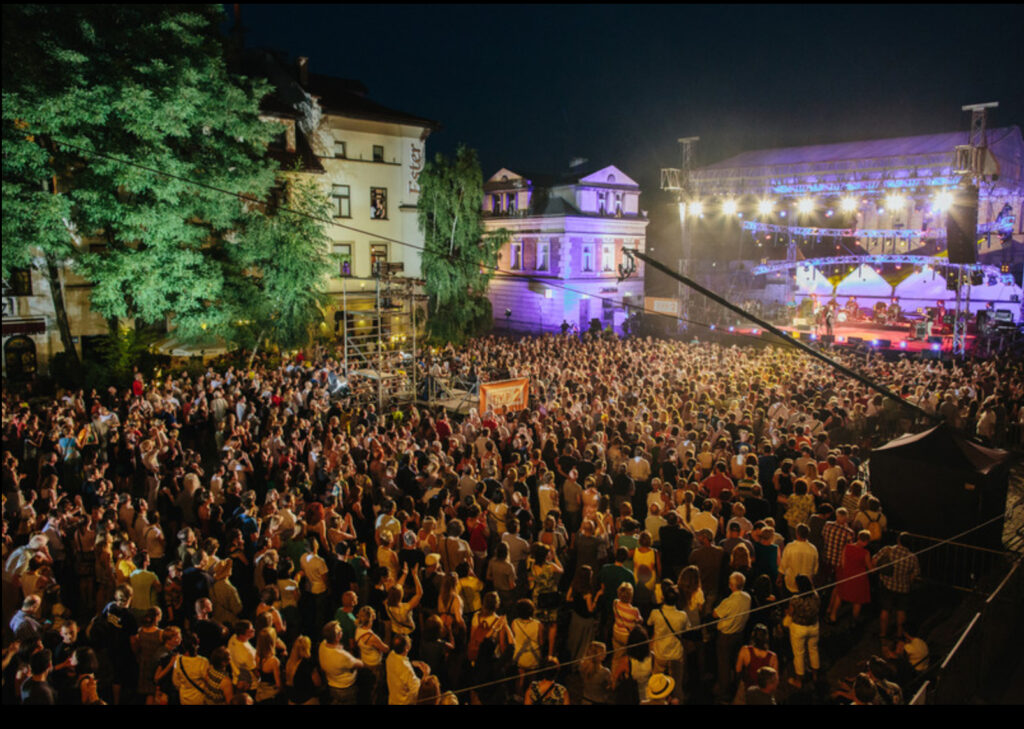
Here’s a two-day itinerary for visiting Krakow, Poland, incorporating luxurious accommodation, Klezmer music, and local food scenes.
Day 1: Exploring Krakow’s Historic and Cultural Heart
Morning: Old Town and Main Market Square
- Breakfast at Charlotte – Chleb i Wino, a popular café near the Main Market Square. Enjoy freshly baked bread, pastries, and a variety of Polish and French-style breakfasts.
- Explore Rynek Główny (Main Market Square), one of Europe’s largest medieval squares. Visit:
- St. Mary’s Basilica, famous for its stunning Gothic architecture and wooden altarpiece.
- The Cloth Hall (Sukiennice) for local crafts and art.
- Climb the Town Hall Tower for panoramic views of the city.
- Visit the Rynek Underground Museum, where you can explore medieval Krakow through interactive exhibits beneath the Main Market Square.
Lunch: Traditional Polish Cuisine
- Lunch at Morskie Oko, a cozy restaurant serving traditional Polish dishes like pierogi (dumplings), oscypek (smoked cheese), and hearty soups in a mountain-cabin atmosphere.
Afternoon: Wawel Hill
- Visit the Wawel Castle, a UNESCO World Heritage Site. Tour the Royal Chambers, Crown Treasury, and Wawel Cathedral, where Polish kings were crowned.
- Stop by the Wawel Dragon’s Den and explore the legends of Krakow’s founding.
Luxurious Accommodation
- Check-in at Hotel Stary, a luxurious 5-star hotel located near the Main Market Square. This hotel is known for its elegant interiors, a spa with a salt cave, and a rooftop terrace with stunning views of Krakow.
Evening: Klezmer Music Night in Kazimierz
- Head to the Kazimierz district, historically the center of Jewish life in Krakow.
- Dinner at Klezmer Hois in Kazimierz. Enjoy traditional Jewish cuisine such as gefilte fish, latkes, and cholent while listening to live Klezmer music in a beautifully restored pre-war Jewish building.
Day 2: Kazimierz and Krakow’s Jewish Heritage
Morning: Jewish Heritage Tour in Kazimierz
- Start your day with a breakfast at HAMSA in Kazimierz, where you can enjoy Middle Eastern and Jewish-inspired dishes.
- Take a walking tour of the Kazimierz Jewish Quarter:
- Visit the Old Synagogue, one of the oldest in Poland.
- Explore the Remuh Synagogue and Cemetery, a historically significant site in Jewish Krakow.
- Stop by the Galicia Jewish Museum, where you can learn more about Jewish life in the Galicia region and its tragic history during the Holocaust.
Lunch: Krakow’s Street Food Scene
- For lunch, try zapiekanka (a type of open-faced sandwich topped with various ingredients) from one of the food stalls at Plac Nowy in Kazimierz. It’s a local favorite and a quintessential Krakow street food experience.
Afternoon: Oskar Schindler’s Factory
- Visit Oskar Schindler’s Factory Museum, which chronicles Krakow’s history during World War II and the Holocaust, as well as the story of Schindler’s efforts to save Jewish workers.
Luxurious Relaxation and Dinner
- Return to Hotel Stary and take advantage of its luxurious spa, which includes an indoor pool in a historic cellar, steam rooms, and a sauna to unwind after a day of exploration.
- Dinner at Szara Gęś, an elegant restaurant located on the Main Market Square. This restaurant combines modern Polish cuisine with historic surroundings, offering dishes like duck with cherry sauce, Polish steaks, and innovative desserts.
Evening: Drinks and Views
- End your trip with a cocktail or glass of wine on the Hotel Stary’s rooftop terrace, enjoying views of Krakow’s illuminated skyline, including St. Mary’s Basilica and the Cloth Hall.
This itinerary combines the rich history and culture of Krakow with luxurious relaxation, traditional and Jewish cuisine, and a memorable night of Klezmer music.
